
How to Use 74HC165: Examples, Pinouts, and Specs
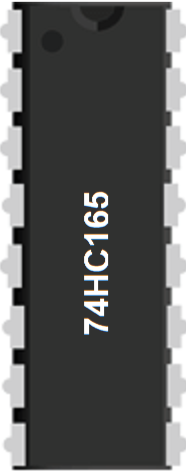
 Design with 74HC165 in Cirkit Designer
Design with 74HC165 in Cirkit Designer74HC165 Shift Register Documentation
1. Introduction
The 74HC165 is an 8-bit parallel-in/serial-out (PISO) shift register designed for high-speed data transfer. Manufactured by Arduino (Part ID: UNO), this component is widely used in digital electronics to convert parallel data into serial data streams. It is particularly useful in applications where microcontrollers or processors have limited input pins but need to read multiple parallel signals.
Common Applications:
- Expanding input pins for microcontrollers (e.g., Arduino UNO)
- Reading multiple switches or sensors
- Data acquisition systems
- Serial communication systems
- Digital signal processing
The 74HC165 is a versatile and cost-effective solution for interfacing multiple parallel inputs with a microcontroller.
2. Technical Specifications
The following table outlines the key technical details of the 74HC165:
| Parameter | Value |
|---|---|
| Supply Voltage (Vcc) | 2V to 6V |
| Input Voltage (VI) | 0V to Vcc |
| Output Voltage (VO) | 0V to Vcc |
| Maximum Clock Frequency | 25 MHz (at 4.5V) |
| Quiescent Current (Icc) | 1 µA (typical) |
| Operating Temperature | -40°C to +125°C |
| Package Types | DIP-16, SOIC-16, TSSOP-16 |
Pin Configuration and Descriptions
The 74HC165 has 16 pins, as described in the table below:
| Pin Number | Pin Name | Description |
|---|---|---|
| 1 | SH/LD̅ | Shift/Load Control (Active Low). Loads parallel data when LOW. |
| 2 | CLK INH | Clock Inhibit. Disables the clock when HIGH. |
| 3 | CLK | Clock Input. Shifts data on the rising edge. |
| 4 | QH | Serial Data Output. Outputs the last bit of the shift register. |
| 5-12 | D0-D7 | Parallel Data Inputs. Accepts 8-bit parallel data. |
| 13 | QH̅ | Complementary Serial Data Output (optional, inverted QH). |
| 14 | SER | Serial Data Input. Used for cascading multiple 74HC165 ICs. |
| 15 | Vcc | Positive Power Supply. |
| 16 | GND | Ground. |
3. Usage Instructions
Connecting the 74HC165 to an Arduino UNO
The 74HC165 can be easily interfaced with an Arduino UNO to read multiple parallel inputs using only a few pins. Below is a step-by-step guide:
Wiring the Circuit:
- Connect the Vcc pin (Pin 15) of the 74HC165 to the 5V pin of the Arduino.
- Connect the GND pin (Pin 16) to the Arduino's GND.
- Connect the SH/LD̅ pin (Pin 1) to a digital pin on the Arduino (e.g., Pin 8).
- Connect the CLK pin (Pin 3) to another digital pin on the Arduino (e.g., Pin 9).
- Connect the CLK INH pin (Pin 2) to GND (or control it via another Arduino pin if needed).
- Connect the QH pin (Pin 4) to a digital input pin on the Arduino (e.g., Pin 10).
- Connect the D0-D7 pins to the parallel data source (e.g., switches or sensors).
Arduino Code Example: The following code demonstrates how to read 8 parallel inputs using the 74HC165 and display the results in the Serial Monitor.
// Pin definitions for the 74HC165 const int loadPin = 8; // SH/LD̅ pin (Pin 1) const int clockPin = 9; // CLK pin (Pin 3) const int dataPin = 10; // QH pin (Pin 4) void setup() { pinMode(loadPin, OUTPUT); // Set loadPin as output pinMode(clockPin, OUTPUT); // Set clockPin as output pinMode(dataPin, INPUT); // Set dataPin as input Serial.begin(9600); // Initialize Serial Monitor } void loop() { digitalWrite(loadPin, LOW); // Load parallel data into the shift register delayMicroseconds(5); // Small delay for stability digitalWrite(loadPin, HIGH); // Return to shift mode byte data = 0; // Variable to store the shifted data for (int i = 0; i < 8; i++) { digitalWrite(clockPin, LOW); // Generate clock pulse delayMicroseconds(5); // Small delay for stability data |= (digitalRead(dataPin) << (7 - i)); // Read bit and shift it digitalWrite(clockPin, HIGH); // Complete clock pulse delayMicroseconds(5); } Serial.print("Input Data: "); Serial.println(data, BIN); // Print the 8-bit data in binary format delay(500); // Wait before the next read }
Important Considerations:
- Ensure the SH/LD̅ pin is LOW when loading parallel data and HIGH during shifting.
- Use pull-up or pull-down resistors on the D0-D7 pins if they are connected to switches.
- Avoid exceeding the maximum clock frequency (25 MHz at 4.5V).
4. Troubleshooting and FAQs
Common Issues and Solutions:
| Issue | Possible Cause | Solution |
|---|---|---|
| No data is being read by the Arduino. | Incorrect wiring or loose connections. | Double-check all connections and ensure proper wiring. |
| Data is inconsistent or noisy. | Floating inputs on D0-D7 pins. | Use pull-up or pull-down resistors on the input pins. |
| Data does not shift correctly. | Incorrect clock signal or timing issues. | Verify the clock signal and ensure proper delays in the code. |
| Serial output is always HIGH or LOW. | SH/LD̅ pin is not toggled correctly. | Ensure the SH/LD̅ pin is LOW during loading and HIGH during shifting. |
| Multiple 74HC165 ICs are not cascading. | Incorrect connection of SER and QH pins. | Connect the QH pin of the first IC to the SER pin of the next IC in the chain. |
Frequently Asked Questions:
Can I cascade multiple 74HC165 ICs? Yes, connect the QH pin of the first IC to the SER pin of the next IC. Repeat this for additional ICs.
What is the maximum number of inputs I can read with cascading? Theoretically, there is no limit, but practical constraints like timing and signal integrity should be considered.
Can I use the 74HC165 with a 3.3V microcontroller? Yes, the 74HC165 operates with a supply voltage as low as 2V. Ensure the logic levels are compatible.
What happens if the clock frequency is too high? The IC may fail to shift data correctly. Ensure the clock frequency does not exceed the specified maximum.
This documentation provides a comprehensive guide to using the 74HC165 shift register. Whether you're a beginner or an experienced user, this component is an excellent choice for expanding input capabilities in your projects.
Explore Projects Built with 74HC165
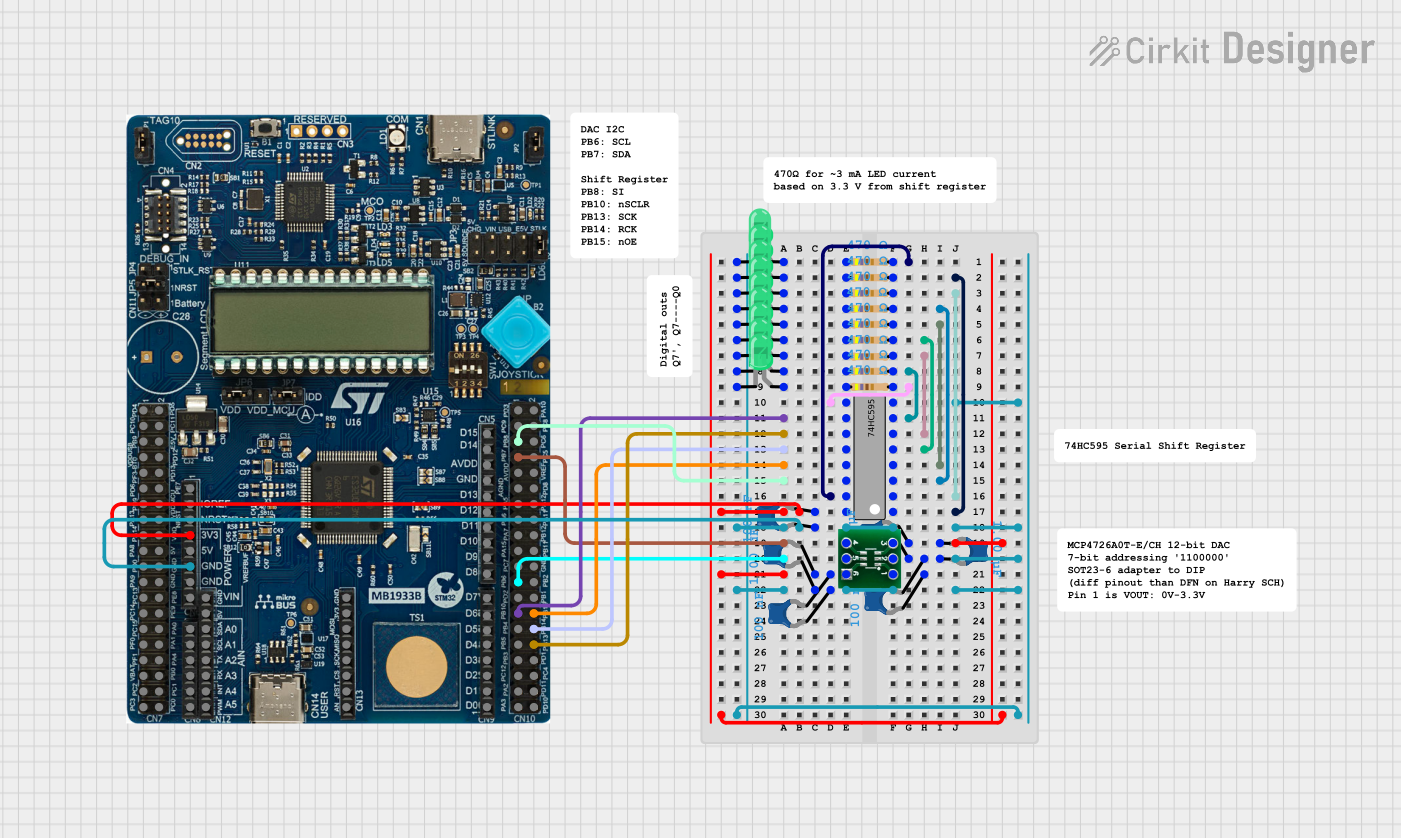
 Open Project in Cirkit Designer
Open Project in Cirkit Designer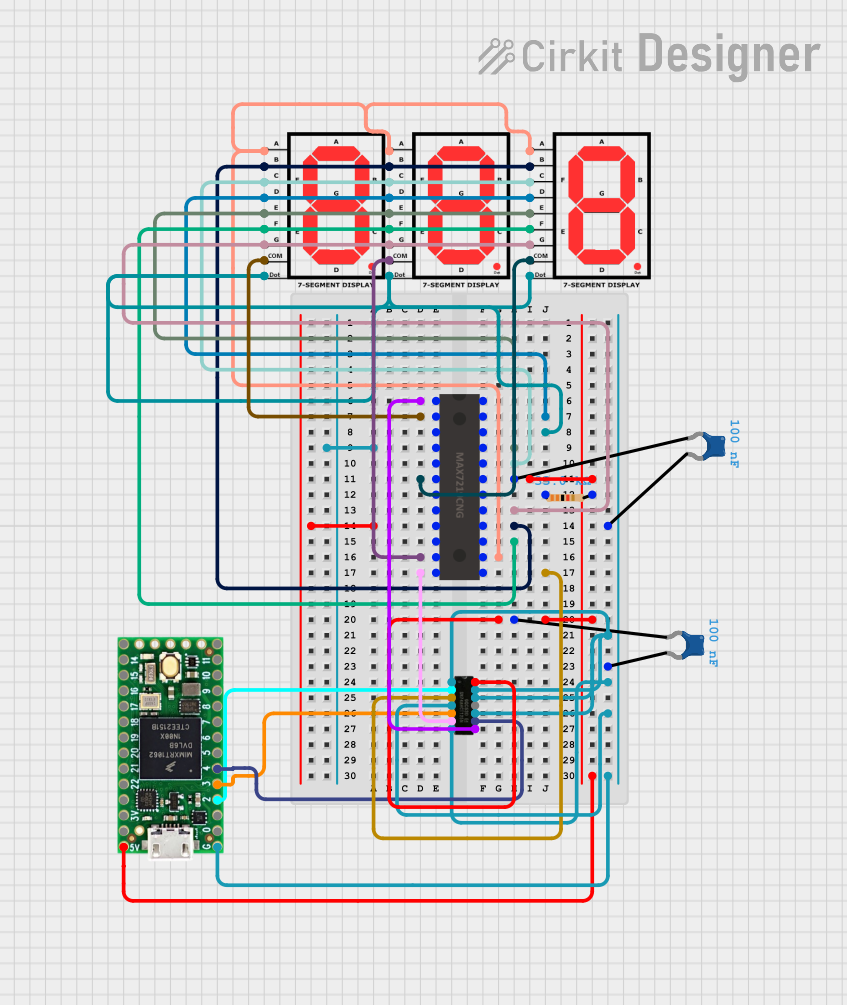
 Open Project in Cirkit Designer
Open Project in Cirkit Designer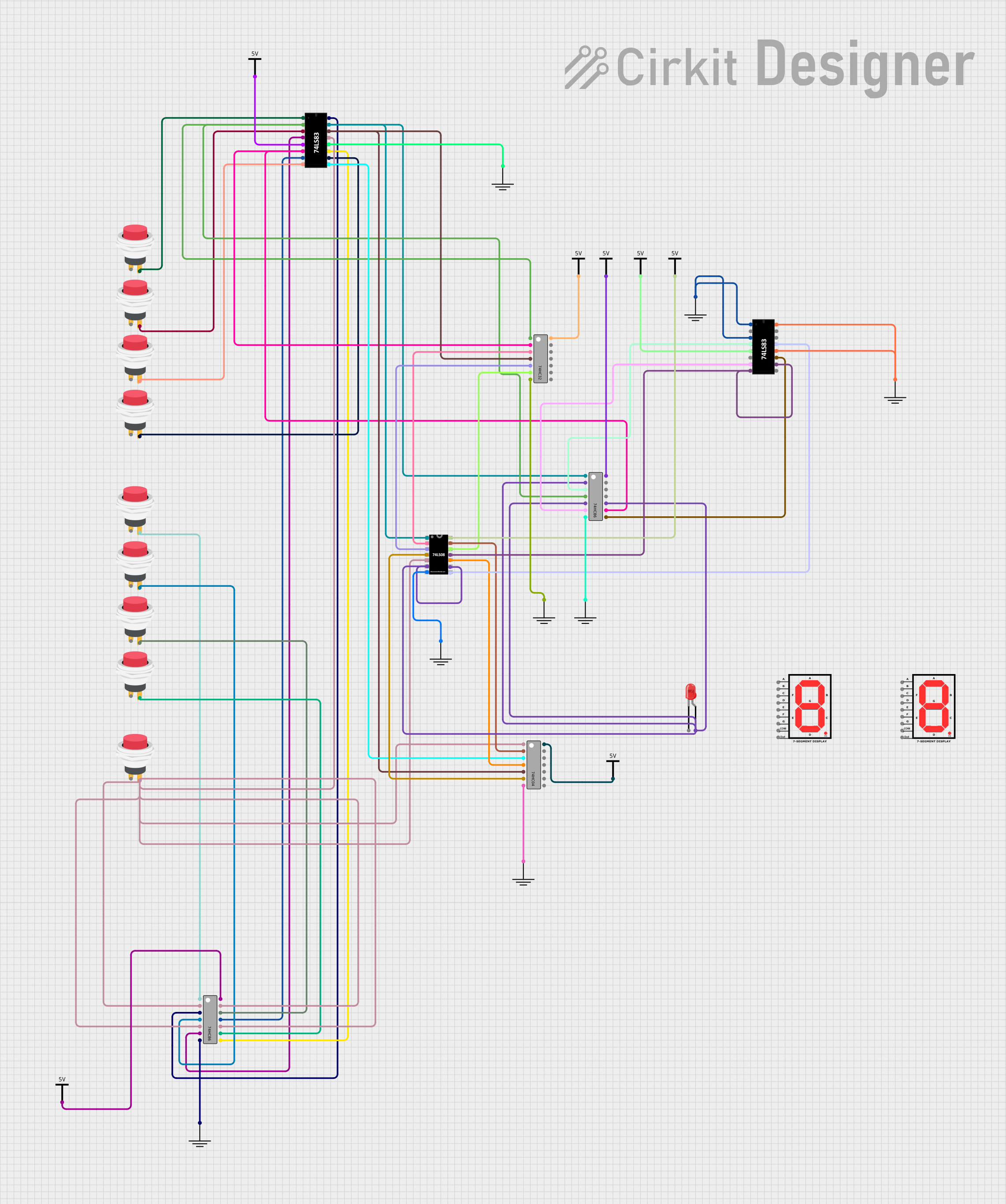
 Open Project in Cirkit Designer
Open Project in Cirkit Designer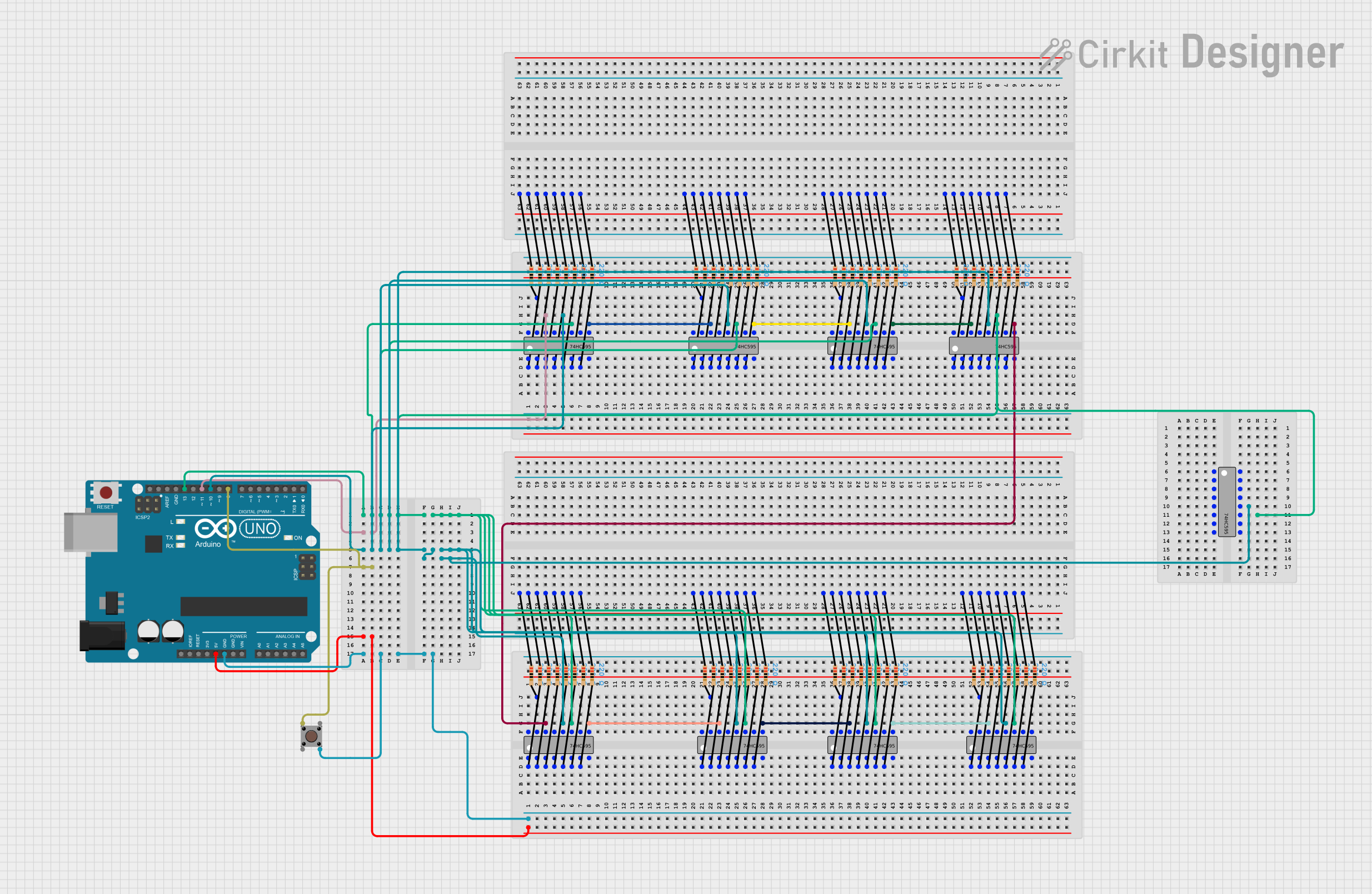
 Open Project in Cirkit Designer
Open Project in Cirkit DesignerExplore Projects Built with 74HC165

 Open Project in Cirkit Designer
Open Project in Cirkit Designer
 Open Project in Cirkit Designer
Open Project in Cirkit Designer
 Open Project in Cirkit Designer
Open Project in Cirkit Designer
 Open Project in Cirkit Designer
Open Project in Cirkit Designer